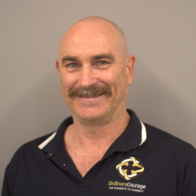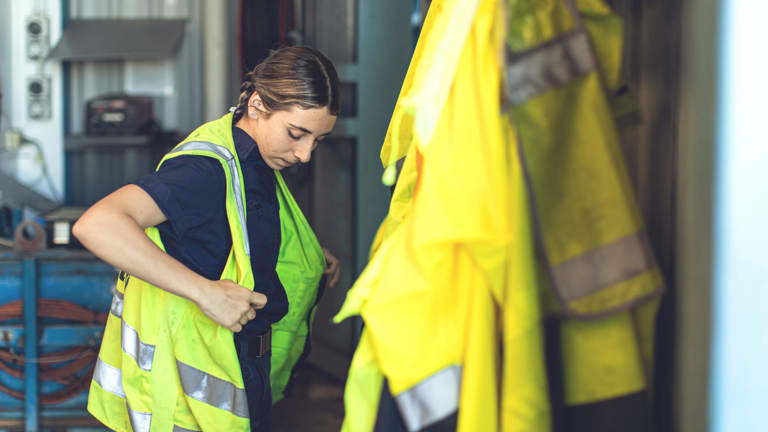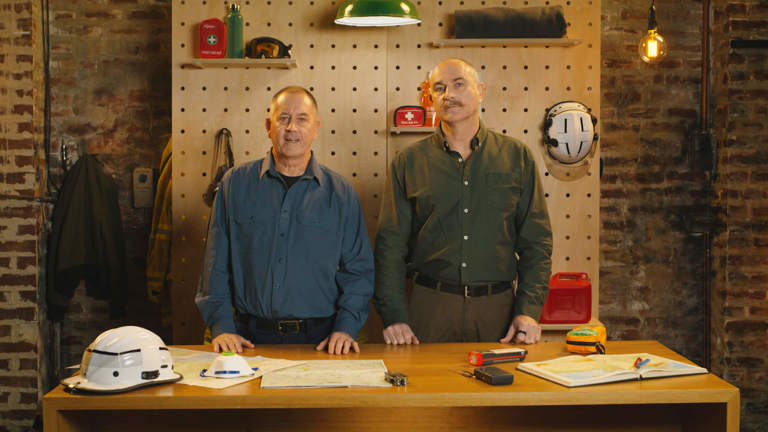There’s no denying the power of community.
Research shows that feeling part of a community positively affects wellbeing1 and boosts resilience.2
And, when a devastating bushfire hit the tiny Victorian town of Pomonal in February 2024, destroying 46 homes,3 it was the strong sense of connection among the 356 residents4 that experts say led to the town’s notable recovery.
Mark Dobson, long-serving firefighter and volunteer team manager for Disaster Relief Australia, describes Pomonal as a lesson in how a strong sense of community can not only drive the physical rebuilding of a town after disaster but can also help to support the mental health and recovery of its residents.
“That sense of everyone being in it together can actually make the recovery phase of an emergency such as the Pomonal bushfire much more psychologically safe for everyone,” says Mark.
“After a disaster, it’s common for people to feel a whole range of emotions, from anger through to isolation and depression. But where community resilience is so important is that people band together and look after each other through what can be a very difficult and intense time.”
What is community resilience?
Community resilience is the enduring capacity of communities to withstand, adapt to, and recover from challenges.5 And, while the recovery phase of natural disasters is where that sense of belonging can help the mental health of those affected, the way in which a community comes together to prepare for disaster is where resilience really begins.
“It’s during the preparedness and recovery phases that having strong community organisation from the inside can really make a difference.”

“It’s about everyone getting in and rolling up their sleeves, which can have amazing results when an emergency comes.”
This could entail forming committees to manage the creation of an evacuation plan for residents, identifying those who may need extra help preparing their property, and liaising with local councils to ensure vegetation in public spaces is properly managed.
How Pomonal prepared for a bushfire
Famous for its native flowers and orchids,6 Pomonal – in Victoria’s Grampians region – is around 245km northwest of Melbourne on the picturesque eastern slopes of the Mount William Range.
Despite the intensity of the fire that tore through the town on February 13, no lives were lost.3 This was thanks to a community that heeded warnings to evacuate early and the work of a local association that had a specific resilience plan in place long before the fire arrived.
“The Pomonal Community Resilience Group started more than eight years ago and concentrates on building community resilience, not individual resilience,” says Pomonal Progress Association (PPA)7 Chair Jill Miller.
“Our first idea was to connect our community, run with our strengths and avoid duplicating effort.”
A sub-group of the PPA, Jill says the Community Resilience Group was guided by the six characteristics of resilient communities, as identified by the International Federation of Red Cross and Red Crescent Societies.8
These suggest that a resilient community:
- Possesses knowledge, maintains good health and fulfils basic needs
- Offers economic opportunities
- Demonstrates social cohesion
- Has well-maintained and easily accessible infrastructures and services
- Effectively manages its natural assets
- Is well-connected.8
“The PPA adopted these principles into their overall planning processes,” explains Jill.
“We mapped what we already had and gaps in these categories, including what we as (the) PPA or other groups in our village would be able to do.”
Some of the things the Pomonal Community Resilience Group put in place before the fire included creating community communication channels on social media, building connections through annual community gatherings and setting up a shared electronic community directory. This allowed them to hit the ground running the day after the fire swept through.
After the blaze, Jill also coordinated an ‘I need’ box, where residents could fill out a slip of paper listing items they had to give away or items they desperately needed.
Mark says it’s small acts like these that can contribute to the sense of community resilience long after the emergency services and external agencies have left town.
He adds that one of the challenges with the work he does at Disaster Relief Australia is having to leave before the whole job is done.
“So, part of our process is that when we leave, we figure out what the outstanding work is and try to find some people who’ll keep going and supporting the unfinished work.”
How to build community resilience
With climate change exacerbating extreme weather events in Australia, preparing communities for emergencies like bushfires remains critically important.9
In 2022, the Australian Government committed $34.4 million to help deliver disaster resilience and readiness projects across communities to improve preparedness for future emergencies.10
But Mark points out, as Pomonal has shown, community-level projects needn’t be expensive or complicated.
When fire devastated the New South Wales coastal town of Tathra in 2018, destroying 65 homes and buildings, as well as 70 caravans and cabins,11 Mark says a “culture of committee makers” among residents who were Canberra retirees helped get the seaside community back on its feet.
“They were just used to having committees and meetings, and they knew how to get together and respect each other’s opinions,” he explains.
“They set up a community recovery committee and got a group of local builders together who agreed to donate their time whenever they could manage to help rebuild the town.”
How your community could get started
Mark advises that in small towns and communities, such as Pomonal and Tathra, creating a committee or group focused on emergency or disaster preparation might be as simple as getting a group of friends together regularly for a coffee at the local cafe.
Approaching the local brigade of your rural fire service to provide guidance and advice can steer your group in the right direction when setting up a bushfire emergency plan for your community.
In semi-rural or even urban settings, where you might not know your neighbours well, Mark says piggybacking on existing associations or groups and finding out about specific skills that people have can be useful when preparing for – or recovering from – an emergency.
“You can start as small as just introducing yourself to others on your street to talk about how you can best prepare and help each other in the face of an emergency.”

Remember, the point is to get people aware of the possible disasters your community may face and to get them ready and willing to help and take care of one another in a time of crisis.
Why it’s important to start preparing now
Australia is one of the world’s most fire-prone countries,12 which makes preparing for bushfires a task we can all benefit from. This might include creating your own bushfire survival plan, preparing your property and staying aware of fire danger ratings in your area.
With fire service resources increasingly stretched, developing community resilience by working together in a coordinated way can go a long way to protecting homes and lives in your local area.
“Planning is actually essential if you’re going to save lives,” says Mark.
For more expert tips to help you get bushfire ready, visit our you.prepared emergency content hub.
Mark Dobson
An active firefighter with more than 20 years of experience, Mark Dobson is the founder of Ordinary Courage, a workplace mental health consultancy. Mark is a Churchill Fellow, a volunteer team manager for Disaster Relief Australia and a recipient of the Australian Fire Service Medal (2020) for his pioneering work supporting first responders’ mental health. Youi is proud to partner with Mark in the creation of this bushfire preparedness content.
The content in this article has been prepared based on current government and emergency services guidelines and expert advice provided at the time of publishing. This information is subject to change. Please be sure to check for the latest information and always consider your personal circumstances regarding bushfire preparedness and response.
Where you have increased your cover or reduced your excess within 72 hours (or other period noted on your policy schedule) of a flood, storm, hail or bushfire occurring, cover will be limited to the amount that was effective prior to the change. Loss, damage or legal liability caused by, resulting or arising from flood, storm, hail or bushfire during the first 72 hours (or other period noted on your policy schedule) of your policy first being purchased is excluded unless certain conditions apply. Refer to the relevant PDS, TMD and your policy schedule for full T&Cs.
1 Source: National Library of Medicine (USA) – Sense of Belonging, Meaningful Daily Life Participation, and Well-Being: Integrated Investigation, March 2023
2 Source: The University of Queensland – Neighbourhood connection improves mental health, March 2024
3 Source: ABC News – After bushfire ‘hell’, firefighters and fundraisers saved Pomonal, but some residents may not come back, March 2024
4 Source: Australian Bureau of Statistics – Pomonal 2021 Census All persons QuickStats
5 Source: Australian Local Government Association – Stronger Community Resilience
6 Source: Visit Grampians – Pomonal
7 The Pomonal Progress Association is not affiliated with any insurance company.
8 Source: International Federation of Red Cross and Red Crescent Societies – Road map to community resilience
9 Source: CSIRO – Disaster resilience
10 Source: National Emergency Management Agency – Protecting our Communities (Disaster Resilience) Program
11 Source: Australian Institute for Disaster Resilience – Tathra bushfire, 2018
12 Source: CSIRO – Bushfire tracking with Sentinel Hotspots



